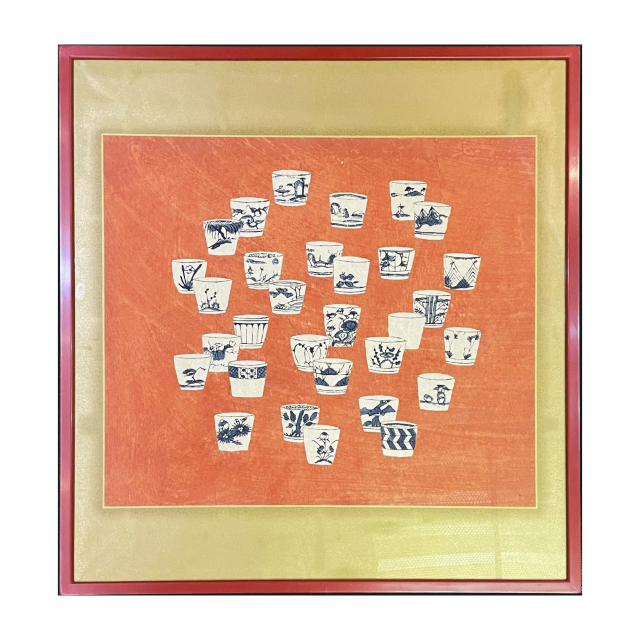
SOLD
Frame:83cm×78cm
Various designs are depicted on the buckwheat cups. Keisuke Serizawa was a well-known collector, and the Serizawa Keisuke Museum of Art in Shizuoka houses 4,500 pieces of artifacts from around the world. Perhaps the soba-choko (buckwheat noodle cup) depicted here was also part of Keisuke Serizawa's collection. There is a sticker by Keisuke Serizawa's son, Chosuke Serizawa, on the back of the frame.
Keisuke Serizawa read Muneyoshi Yanagi's "The Way of Industrial Arts" and was deeply impressed by the beauty of Okinawan Bingata and decided to become a dyeing artist. Then, as a dyeing artist, he was recognized as a Living National Treasure for "kata-e dye". In addition to dyeing, he was also active in a wide range of other fields, including bookbinding, glass painting, plate painting, pottery painting, and signboard and lighting design.
Keisuke SERIZAWA
1895 – 1984
He was a Japanese textile designer. In 1956, he was designated as a Living National Treasure by the Japanese government for his katazome stencil dyeing technique. A leading member of the mingei movement founded by Yanagi Sōetsu, Serizawa visited Okinawa several times and learned the Ryūkyū bingata techniques of dyeing. His folk-art productions included kimono, paper prints, wall scrolls, folding screens, curtains, fans, and calendars.
In 1981, the Municipal Serizawa Keisuke Art Museum was opened in the city of Shizuoka. Other museums that hold his work include the Brooklyn Museum, the Metropolitan Museum of Art, the Harvard Art Museums, the Seattle Art Museum, the British Museum, the University of Michigan Museum of Art, and the Museum of New Zealand.
Contact about the Item